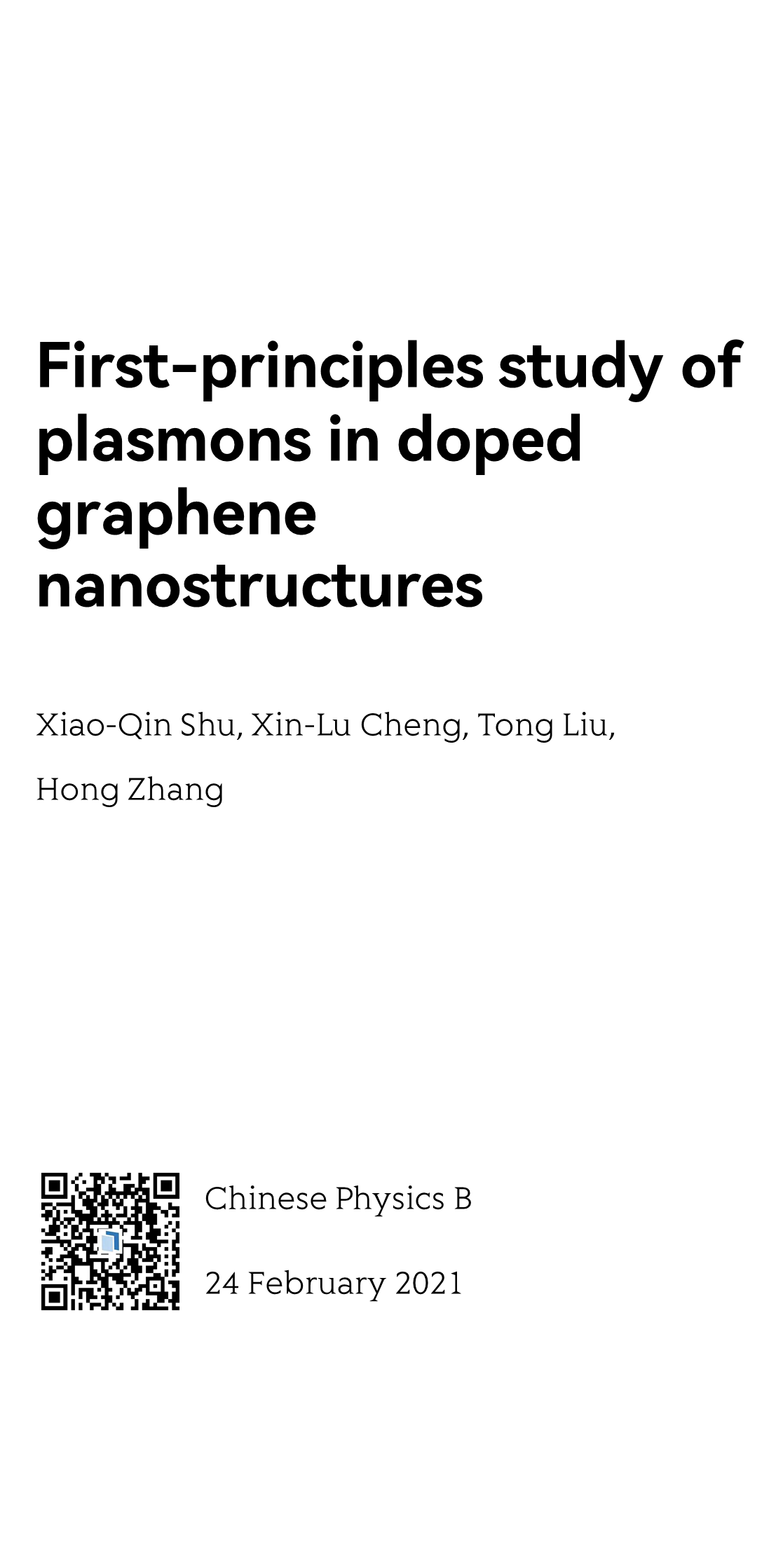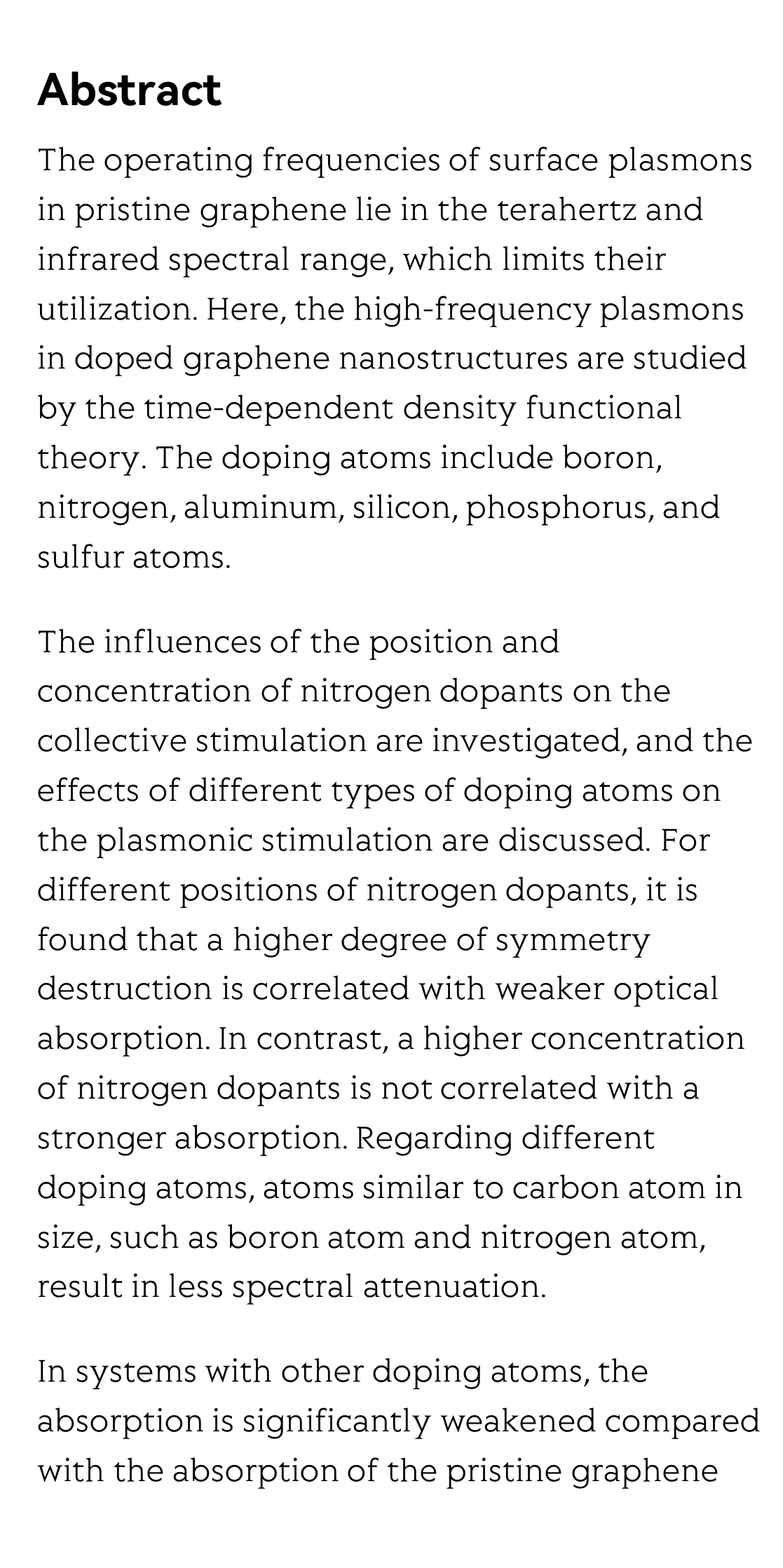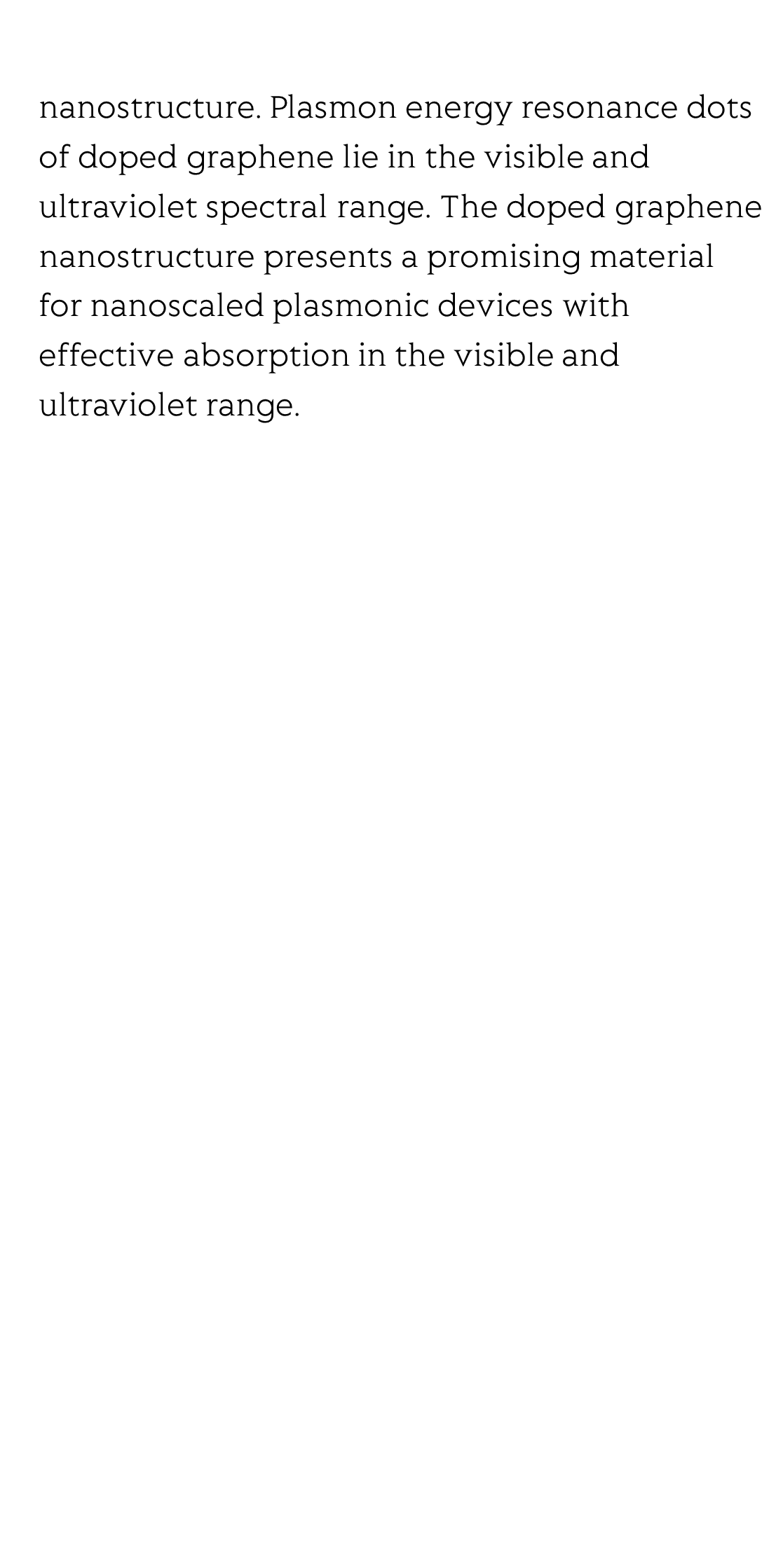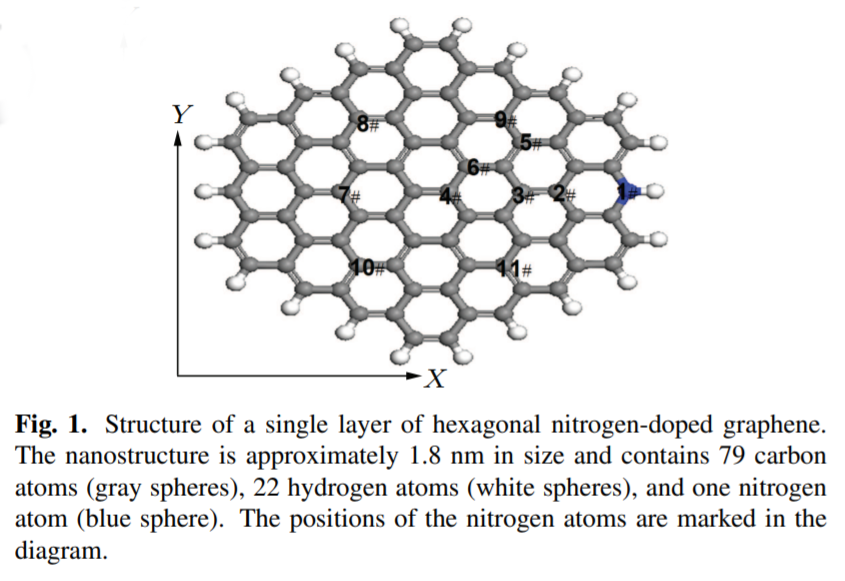(Peer-Reviewed) First-principles study of plasmons in doped graphene nanostructures
Xiao-Qin Shu 舒晓琴 ¹, Xin-Lu Cheng 程新路 ², Tong Liu 刘彤 ³, Hong Zhang 张红 ²
¹ College of Mathematics and Physics, Leshan Normal College, Leshan 614000, China
中国 乐川 乐山师范学院数理学院
² College of Physics, Sichuan University, Chengdu 610065, China
中国 成都 四川大学物理学院
³ School of Science, Xihua University, Chengdu 610065, China
中国 成都 西华大学理学院
Chinese Physics B
, 2021-02-24
Abstract
The operating frequencies of surface plasmons in pristine graphene lie in the terahertz and infrared spectral range, which limits their utilization. Here, the high-frequency plasmons in doped graphene nanostructures are studied by the time-dependent density functional theory. The doping atoms include boron, nitrogen, aluminum, silicon, phosphorus, and sulfur atoms.
The influences of the position and concentration of nitrogen dopants on the collective stimulation are investigated, and the effects of different types of doping atoms on the plasmonic stimulation are discussed. For different positions of nitrogen dopants, it is found that a higher degree of symmetry destruction is correlated with weaker optical absorption. In contrast, a higher concentration of nitrogen dopants is not correlated with a stronger absorption. Regarding different doping atoms, atoms similar to carbon atom in size, such as boron atom and nitrogen atom, result in less spectral attenuation.
In systems with other doping atoms, the absorption is significantly weakened compared with the absorption of the pristine graphene nanostructure. Plasmon energy resonance dots of doped graphene lie in the visible and ultraviolet spectral range. The doped graphene nanostructure presents a promising material for nanoscaled plasmonic devices with effective absorption in the visible and ultraviolet range.
Flicker minimization in power-saving displays enabled by measurement of difference in flexoelectric coefficients and displacement-current in positive dielectric anisotropy liquid crystals
Junho Jung, HaYoung Jung, GyuRi Choi, HanByeol Park, Sun-Mi Park, Ki-Sun Kwon, Heui-Seok Jin, Dong-Jin Lee, Hoon Jeong, JeongKi Park, Byeong Koo Kim, Seung Hee Lee, MinSu Kim
Opto-Electronic Advances
2025-09-25
Dual-frequency angular-multiplexed fringe projection profilometry with deep learning: breaking hardware limits for ultra-high-speed 3D imaging
Wenwu Chen, Yifan Liu, Shijie Feng, Wei Yin, Jiaming Qian, Yixuan Li, Hang Zhang, Maciej Trusiak, Malgorzata Kujawinska, Qian Chen, Chao Zuo
Opto-Electronic Advances
2025-09-25







